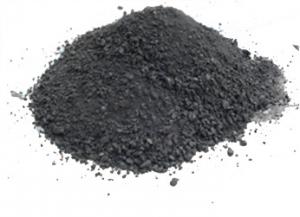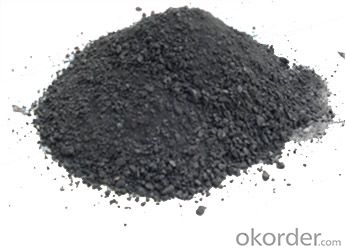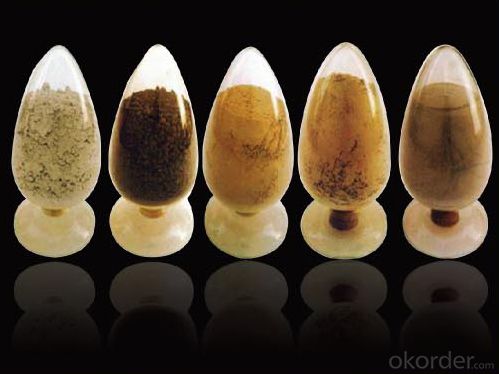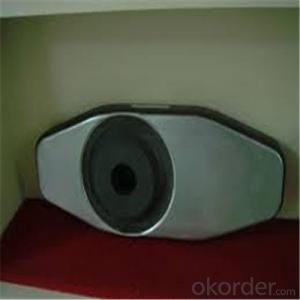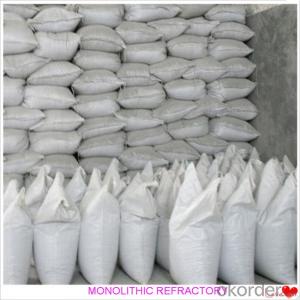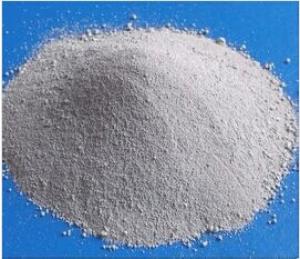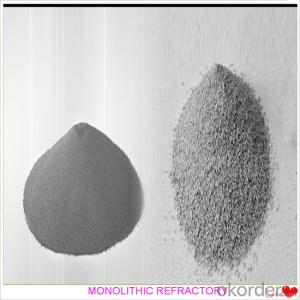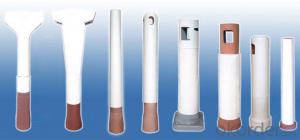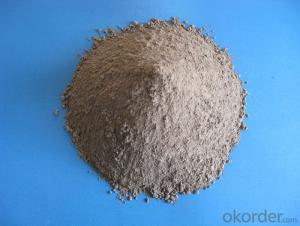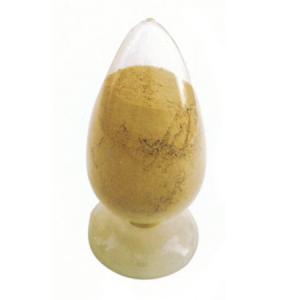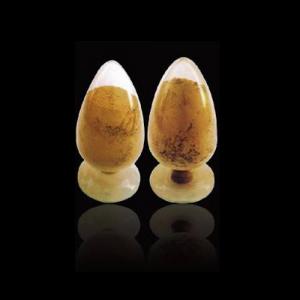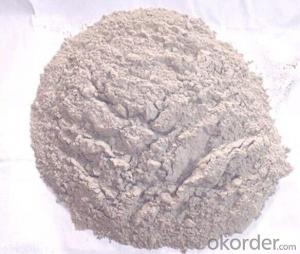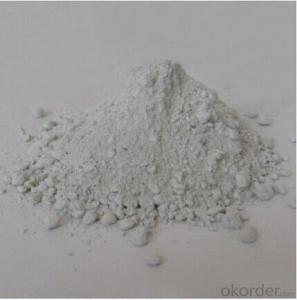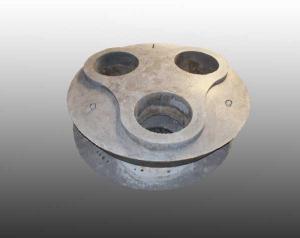Monolithic Refractories for Iron and Steel Industry:Gunning Mass Refractory Material
- Loading Port:
- Shanghai
- Payment Terms:
- TT or LC
- Min Order Qty:
- 20000 kg
- Supply Capability:
- 100000000 kg/month
OKorder Service Pledge
OKorder Financial Service
You Might Also Like
General Information of Gunning Mass
Gunning mass refractories is product that is used in various part of furnace as Monolithic Refractories that added hydraulic alumina cement to refractory aggregate.
Our Company is producing suitable product to installation and working condition through a quality control, this product which is minimizing alumina cement for using various dispersants and ultra fine powder so it has excellent abrasion resistance, erosion resistance, spalling resistance and chemical resistance . It widely used in part of various industrial furnace including incinerator, nonferrous metal furnace etc.
Features of Gunning Mass
High refractoriness, High refractoriness under load
High density, low porosity
Good slag resistance and corrosion resistance
High strength and wear resistance
Good resistance to flake performance
Good thermal shock stability
Scouring resistance
Good hot strength
Technical Data Sheet of Gunning Mass
CA-190 | CA-185 | CA-180 | CA-175 | CA-170 | CA-165 | CA-160 | CA-155 | CA-150 | CA-140 | |||
Properties | ||||||||||||
Application Limit Temp | 1,800 | 1,800 | 1,750 | 1,700 | 1,700 | 1,650 | 1,600 | 1,550 | 1,500 | 1,400 | ||
Bulk Density (g/cm3) | 2.9 | 2.85 | 2.8 | 2.6 | 2.5 | 2.3 | 2.15 | 2.1 | 2.1 | 2 | ||
Water Required for Casting(%) | 9-10 | 9-10 | 11-12 | 11-12 | 10-13 | 11-14 | 12-15 | 13-16 | 13-16 | 13-17 | ||
CCS/MOR | 110ºCx24h | 55(9) | 30(6) | 30(6) | 30(6) | 25(5) | 25(5) | 20(4) | 20(4.5) | 25(5) | 20(5) | |
1,200ºCx3h | 50(8) | 35(7) | 35(7) | 30(7) | 20(4) | 17(3.5) | 15(3.5) | 15(2.5) | 17(4) | 14(3) | ||
1,400ºCx3h | 60(10) | 50(8) | 60(10) | 60(10) | 50(12) | 45(8) | 40(7) | 40(7) | 32(7.5) | - | ||
Permanent Linear Change(%) | 110ºCx24h | -0.03 | -0.03 | -0.06 | -0.06 | -0.06 | -0.06 | -0.06 | -0.06 | -0.06 | -0.06 | |
1,200ºCx3h | -0.1 | -0.1 | -0.15 | -0.15 | -0.2 | -0.2 | -0.16 | -0.3 | -0.25 | -0.3 | ||
1,400ºCx3h | -0.2 | -0.2 | -1 | -1 | -0.8 | -1 | -1 | -0.7 | - | - | ||
Thermal conductivity(W/m.k) | 400ºC | 0.95 | 0.95 | 0.92 | 0.92 | 0.8 | 0.72 | 0.68 | 0.68 | 0.65 | 0.6 | |
1,000ºC | 1.1 | 1.05 | 1.02 | 1.02 | 0.9 | 0.85 | 0.88 | 0.8 | 0.76 | 0.71 | ||
Chemical Analysis(%) | Al2O3 | 92 | 88 | 82 | 75 | 62 | 55 | 50 | 47 | 44 | 35 | |
SiO2 | - | - | 10 | 10 | 29 | 40 | 43 | 45 | 50 | 55 | ||
Photo of Gunning Mass
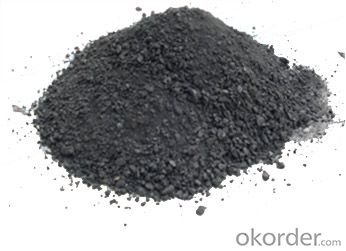
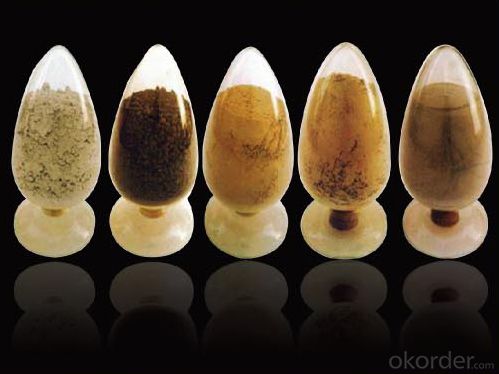
- Q: How are monolithic refractories inspected and tested for quality assurance?
- Monolithic refractories are inspected and tested for quality assurance through various methods. Visual inspections are conducted to check for any visible defects such as cracks, spalling, or other physical damages. In addition, non-destructive testing techniques like ultrasonic testing and X-ray inspection are used to detect any internal flaws or inconsistencies in the refractory material. Furthermore, mechanical testing such as compression and flexural strength tests are performed to evaluate the mechanical properties of the monolithic refractories. These inspections and tests ensure that the refractories meet the required quality standards and can withstand the harsh operating conditions they are designed for.
- Q: What are the challenges in using monolithic refractories in the iron and steel industry?
- The iron and steel industry faces significant challenges when it comes to using monolithic refractories. One of these challenges is the fact that monolithic refractories are more prone to thermal shock compared to traditional brick refractories. Unlike brick refractories, which are made from multiple materials and have strong structural integrity, monolithic refractories are made from a single material, which makes them more susceptible to cracking and failure when exposed to rapid changes in temperature. Another challenge lies in achieving consistent and uniform application of monolithic refractories. While brick refractories can be precisely shaped and fitted into specific areas, monolithic refractories are typically applied as a mortar-like mixture that is poured or sprayed into place. This process is more complex and requires skilled operators to ensure proper application and adhesion. Additionally, monolithic refractories have a shorter lifespan compared to brick refractories. They are more vulnerable to erosion and wear, especially in high-temperature environments and when exposed to harsh chemicals and slag. This means that regular maintenance and replacement of monolithic refractories are necessary, leading to increased downtime and costs for the iron and steel industry. Furthermore, selecting and customizing monolithic refractories can be challenging. The iron and steel industry has diverse operating conditions and requirements, making it difficult to find the right monolithic refractory composition and design that can withstand the specific demands of each application. Factors such as temperature, chemical composition, and mechanical stress must be carefully considered. In conclusion, although monolithic refractories offer advantages such as easy installation and versatility, their susceptibility to thermal shock, difficulty in achieving uniform application, shorter lifespan, and the need for customized selection present challenges for their effective use in the iron and steel industry.
- Q: What are the considerations for repairing and relining monolithic refractories?
- When it comes to repairing and relining monolithic refractories, there are several key considerations that need to be taken into account. Firstly, it is important to assess the extent of the damage or wear to the refractory lining. This can be done through visual inspection, as well as non-destructive testing techniques such as ultrasonic or thermal imaging. Understanding the severity and location of the damage will help in determining the appropriate repair or relining method. Another consideration is the type of monolithic refractory material being used. Different materials have different properties and performance characteristics, and this needs to be considered when selecting the repair method. For example, some materials may require high-temperature curing or specialized equipment for installation. The operating conditions of the refractory lining also need to be taken into account. Factors such as temperature, chemical exposure, and mechanical stress can affect the performance and longevity of the lining. The repair or relining method should be selected to ensure that it can withstand these conditions and provide long-lasting protection. Additionally, the downtime and cost implications of the repair or relining process need to be considered. Some methods may require longer curing or drying times, which can result in extended shutdown periods. It is important to weigh the benefits of the repair or relining against the potential production losses and expenses associated with the downtime. Lastly, it is crucial to follow industry standards and guidelines when repairing or relining monolithic refractories. This ensures that the repairs are done correctly and in a safe manner, minimizing the risk of future damage or failure. Consulting with refractory experts or manufacturers can provide valuable insights and guidance in this regard. In conclusion, the considerations for repairing and relining monolithic refractories include assessing the extent of damage, understanding the properties of the refractory material, considering the operating conditions, evaluating downtime and cost implications, and following industry standards and guidelines.
- Q: What are the recommended drying procedures for monolithic refractories?
- The recommended drying procedures for monolithic refractories vary depending on the specific type and composition of the refractory material. However, there are some general guidelines that can be followed. Firstly, it is important to remove any excess moisture from the refractory material before drying. This can be done by storing the refractory in a dry environment or using a dehumidifier if necessary. Once the refractory is adequately dried, the drying process can begin. It is recommended to start with a low drying temperature to prevent cracking or spalling of the refractory. Gradually increase the temperature over time to allow for the gradual release of moisture. This can be done by using a controlled drying oven or furnace. The drying time will vary depending on the thickness and composition of the refractory. It is important to follow the manufacturer's guidelines for the specific refractory material being used, as they will provide the recommended drying time and temperature range. During the drying process, it is important to monitor the refractory closely for any signs of cracking or spalling. If any cracks or damage occur, the drying should be stopped immediately to prevent further damage. It may be necessary to repair or replace the damaged areas before continuing with the drying process. Once the refractory is fully dried, it is important to slowly cool it down to prevent thermal shock. This can be done by gradually reducing the temperature over time or allowing the refractory to cool naturally in a controlled environment. Overall, the recommended drying procedures for monolithic refractories involve gradually increasing the temperature over time, monitoring for any signs of damage, and slowly cooling down the refractory to prevent thermal shock. It is important to follow the manufacturer's guidelines and recommendations for the specific refractory material being used to ensure proper drying and optimal performance.
- Q: How do monolithic refractories improve the performance and efficiency of iron and steel production?
- Monolithic refractories play a crucial role in improving the performance and efficiency of iron and steel production. These specialized materials are designed to withstand extreme temperatures, chemical reactions, and mechanical stresses, making them ideal for use in high-temperature industrial processes. One of the key ways in which monolithic refractories enhance performance is by providing a protective lining in furnaces, kilns, and other equipment used in iron and steel production. Due to their superior heat resistance, they protect the underlying structure from the intense heat and prevent any detrimental effects on the equipment. This results in reduced downtime, longer service life, and ultimately, increased overall efficiency. Monolithic refractories also ensure better thermal efficiency in the production process. By minimizing heat losses, these materials help to maintain a stable and uniform temperature distribution, thereby improving the energy efficiency of the system. This is particularly important in iron and steel production, where precise temperature control is crucial for achieving the desired metallurgical properties of the final product. Furthermore, monolithic refractories offer excellent resistance to chemical corrosion, erosion, and slag attacks. They act as a barrier between the molten metal and the refractory lining, preventing undesirable reactions and material degradation. This helps to maintain the integrity of the furnace lining, reducing the need for frequent repairs or replacements. Consequently, it leads to increased productivity and cost savings in the long run. Another advantage of monolithic refractories is their ability to be easily shaped, repaired, or replaced. Unlike traditional brick refractories, which require extensive labor and time-consuming installation, monolithic refractories can be applied in a more flexible and efficient manner. Their flexible nature allows for easy repair of damaged areas, minimizing downtime and ensuring continuous production. In summary, the use of monolithic refractories significantly enhances the performance and efficiency of iron and steel production. These materials provide a protective lining, improve thermal efficiency, resist chemical corrosion, and offer easy installation and repair options. By optimizing the production process, monolithic refractories contribute to higher productivity, reduced downtime, and increased cost-effectiveness in the iron and steel industry.
- Q: How do monolithic refractories perform in high-temperature environments?
- Monolithic refractories are highly effective in high-temperature environments due to their unique characteristics. These refractories are made from a single, continuous composition, as opposed to being composed of multiple bricks or tiles. This monolithic structure provides several advantages when it comes to performance in high-temperature conditions. Firstly, monolithic refractories have excellent thermal shock resistance. This means that they can withstand rapid temperature changes without cracking or spalling. High temperatures can cause significant stress on materials, but the monolithic structure allows for better expansion and contraction, reducing the risk of damage. Additionally, monolithic refractories have high resistance to chemical attack. In high-temperature environments, there are often aggressive chemical agents present that can corrode and erode traditional refractory materials. However, the monolithic composition is usually designed to be chemically inert, providing a protective barrier against these corrosive elements. Moreover, monolithic refractories offer superior strength and durability at high temperatures. Their single composition ensures a dense and compact structure, making them less prone to cracking or breaking under extreme thermal conditions. This strength allows them to maintain their integrity and performance even in the most demanding environments. Furthermore, monolithic refractories can be easily installed and repaired. Unlike traditional refractories, which require precise brick or tile placement, monolithic materials can be poured or sprayed into place, conforming to any shape or size. This flexibility makes installation faster and more cost-effective, reducing downtime and maintenance costs. Overall, monolithic refractories excel in high-temperature environments due to their thermal shock resistance, chemical inertness, durability, and ease of installation. Their ability to withstand extreme heat and harsh conditions makes them a preferred choice for industries such as steel, cement, glass, and petrochemicals, where high temperatures are common.
- Q: What are the main factors affecting the thermal conductivity of monolithic refractories?
- The main factors affecting the thermal conductivity of monolithic refractories are the composition of the refractory material, the density of the material, the porosity of the material, and the presence of any additives or impurities. The composition of the refractory material plays a significant role in determining its thermal conductivity. Different types of refractory materials, such as alumina-based, silica-based, or magnesia-based, have different thermal conductivities due to their varying chemical compositions. For example, materials with a higher alumina content generally have higher thermal conductivities compared to materials with a higher silica content. The density of the refractory material also affects its thermal conductivity. Generally, materials with higher densities have higher thermal conductivities because the closely packed particles allow for more efficient heat transfer. On the other hand, materials with lower densities have lower thermal conductivities as the heat transfer is hindered by the presence of air pockets or voids. The porosity of the refractory material is another important factor affecting its thermal conductivity. Porosity refers to the presence of small pores or spaces within the material. Higher porosity leads to lower thermal conductivity as the air or gas trapped within the pores acts as an insulator, reducing the ability of the material to conduct heat. Therefore, materials with lower porosity tend to have higher thermal conductivities. The presence of any additives or impurities in the refractory material can also affect its thermal conductivity. Certain additives or impurities, such as carbon or metallic oxides, can enhance or inhibit heat transfer in the material. For instance, the addition of carbon can increase thermal conductivity due to its high thermal conductivity, while the presence of metallic oxides may decrease thermal conductivity due to their lower thermal conductivities. In summary, the thermal conductivity of monolithic refractories is influenced by the composition, density, porosity, and the presence of any additives or impurities. Understanding and controlling these factors are crucial in designing and selecting refractory materials with optimal thermal conductivity for specific applications.
- Q: What are the factors to consider when selecting monolithic refractories for specific applications?
- When selecting monolithic refractories for specific applications, there are several factors that need to be considered. These factors include the operating temperature, chemical environment, mechanical stress, and the desired performance characteristics of the refractory material. The operating temperature is a crucial factor to consider as different monolithic refractories have different temperature limits. It is important to choose a refractory material that can withstand the specific temperature range of the application without suffering from thermal spalling or degradation. The chemical environment in which the refractory will be exposed is another crucial factor. Different applications may involve exposure to various chemicals, acids, alkalis, or gases. It is essential to select a monolithic refractory that is chemically resistant to the specific environment to ensure prolonged durability and performance. Mechanical stress is also an important consideration when selecting monolithic refractories. Some applications may involve high mechanical stress such as abrasion, impact, or thermal shock. It is crucial to choose a refractory material that can withstand these stresses without cracking or failure. The desired performance characteristics of the refractory material should also be taken into account. This includes factors such as thermal conductivity, thermal expansion, density, and strength. The application requirements will dictate the specific performance characteristics needed, and the refractory material should be chosen accordingly. Other factors to consider include installation method, availability, cost, and maintenance requirements. Some monolithic refractories may require specialized installation techniques, while others may be more readily available and cost-effective. Additionally, the maintenance requirements of the refractory material should be considered to ensure ease of upkeep and longevity. Overall, selecting the right monolithic refractories for specific applications requires careful consideration of factors such as operating temperature, chemical environment, mechanical stress, desired performance characteristics, installation method, availability, cost, and maintenance requirements. By considering these factors, one can choose the most suitable refractory material that will provide optimal performance and durability in the given application.
- Q: How do monolithic refractories resist corrosion and erosion in the iron and steel industry?
- Monolithic refractories resist corrosion and erosion in the iron and steel industry through their unique composition and properties. They are made of a single material structure, which eliminates joints and seams, reducing the likelihood of corrosion. Additionally, these refractories are designed to have high density and low porosity, making them resistant to penetration by corrosive elements. The refractories also have excellent thermal shock resistance and mechanical strength, which helps them withstand the harsh conditions of the iron and steel industry. Overall, the combination of their composition, density, and strength enables monolithic refractories to effectively resist corrosion and erosion in this industry.
- Q: How does the choice of monolithic refractory impact the overall cost of iron and steel production?
- The choice of monolithic refractory can have a significant impact on the overall cost of iron and steel production. Monolithic refractory refers to a type of refractory material that is installed in a continuous manner, as opposed to traditional brick or tile refractories. One key factor that affects the cost of iron and steel production is the lifespan of the refractory. Monolithic refractories generally have a longer lifespan compared to traditional brick or tile refractories. This means that they require less frequent maintenance and replacement, resulting in lower overall costs over time. Additionally, monolithic refractories have a higher resistance to thermal shock and mechanical stress, which further extends their lifespan and reduces the need for repairs and replacements. Another important consideration is the energy efficiency of the monolithic refractory. These refractories have better insulation properties, which leads to reduced heat loss during the iron and steel production process. This helps to lower energy consumption and, consequently, the overall cost of production. The improved insulation also contributes to a more stable and controlled temperature profile within the furnace, resulting in better product quality and reduced scrap rates. Furthermore, monolithic refractories offer greater flexibility in terms of installation and repair. They can be easily applied to complex shapes and structures, allowing for more efficient use of refractory materials. This reduces waste and lowers material costs. The ease of installation also saves time and labor, further contributing to cost savings. Additionally, monolithic refractories are known for their superior performance in high-temperature environments. They exhibit excellent thermal conductivity and resistance to chemical attacks, ensuring optimal furnace operation and reducing the likelihood of downtime and production delays. This, in turn, minimizes the impact of unexpected maintenance, repairs, and shutdowns on the overall cost of iron and steel production. In conclusion, the choice of monolithic refractory can have a significant impact on the overall cost of iron and steel production. Its longer lifespan, improved energy efficiency, ease of installation and repair, and superior performance in high-temperature environments all contribute to cost savings in various aspects of the production process. Thus, careful consideration of the type of monolithic refractory used can result in significant cost reductions and improved overall efficiency in iron and steel production.
Send your message to us
Monolithic Refractories for Iron and Steel Industry:Gunning Mass Refractory Material
- Loading Port:
- Shanghai
- Payment Terms:
- TT or LC
- Min Order Qty:
- 20000 kg
- Supply Capability:
- 100000000 kg/month
OKorder Service Pledge
OKorder Financial Service
Similar products
Hot products
Hot Searches
Related keywords
